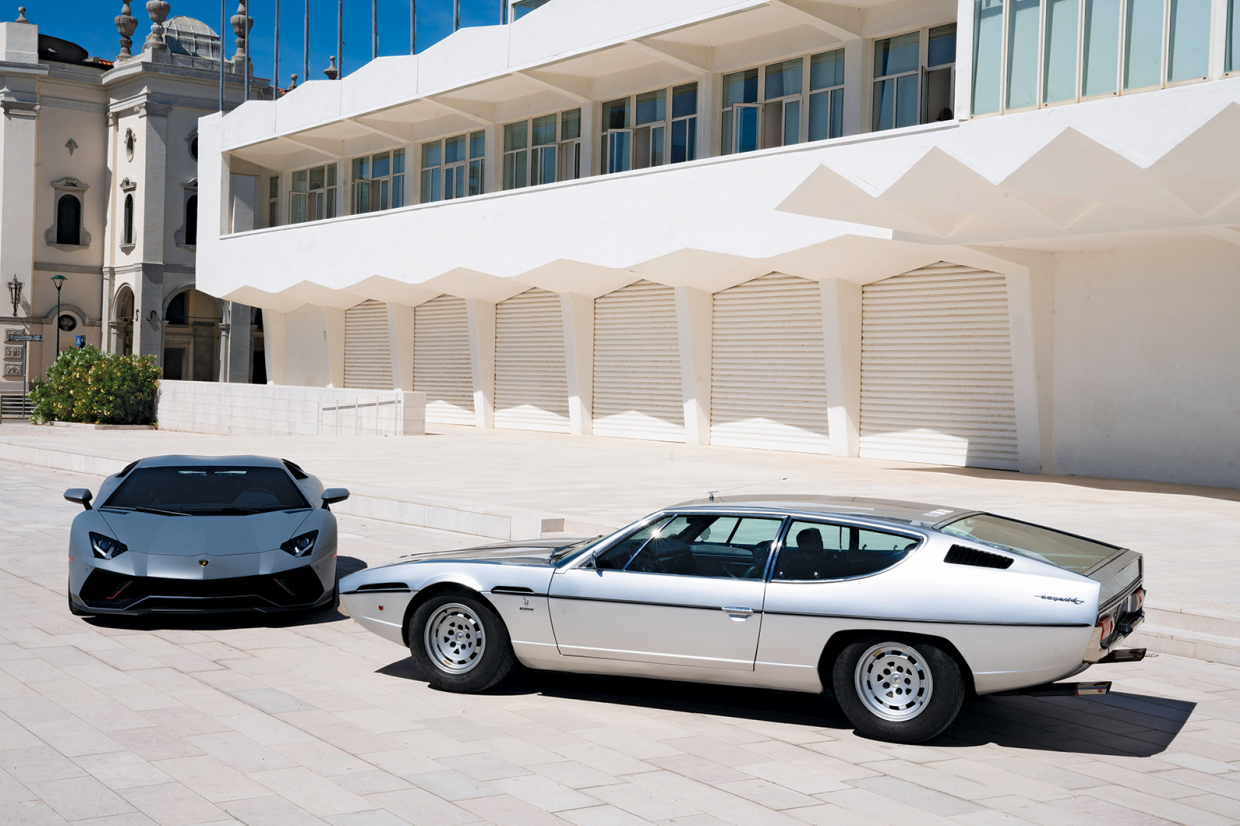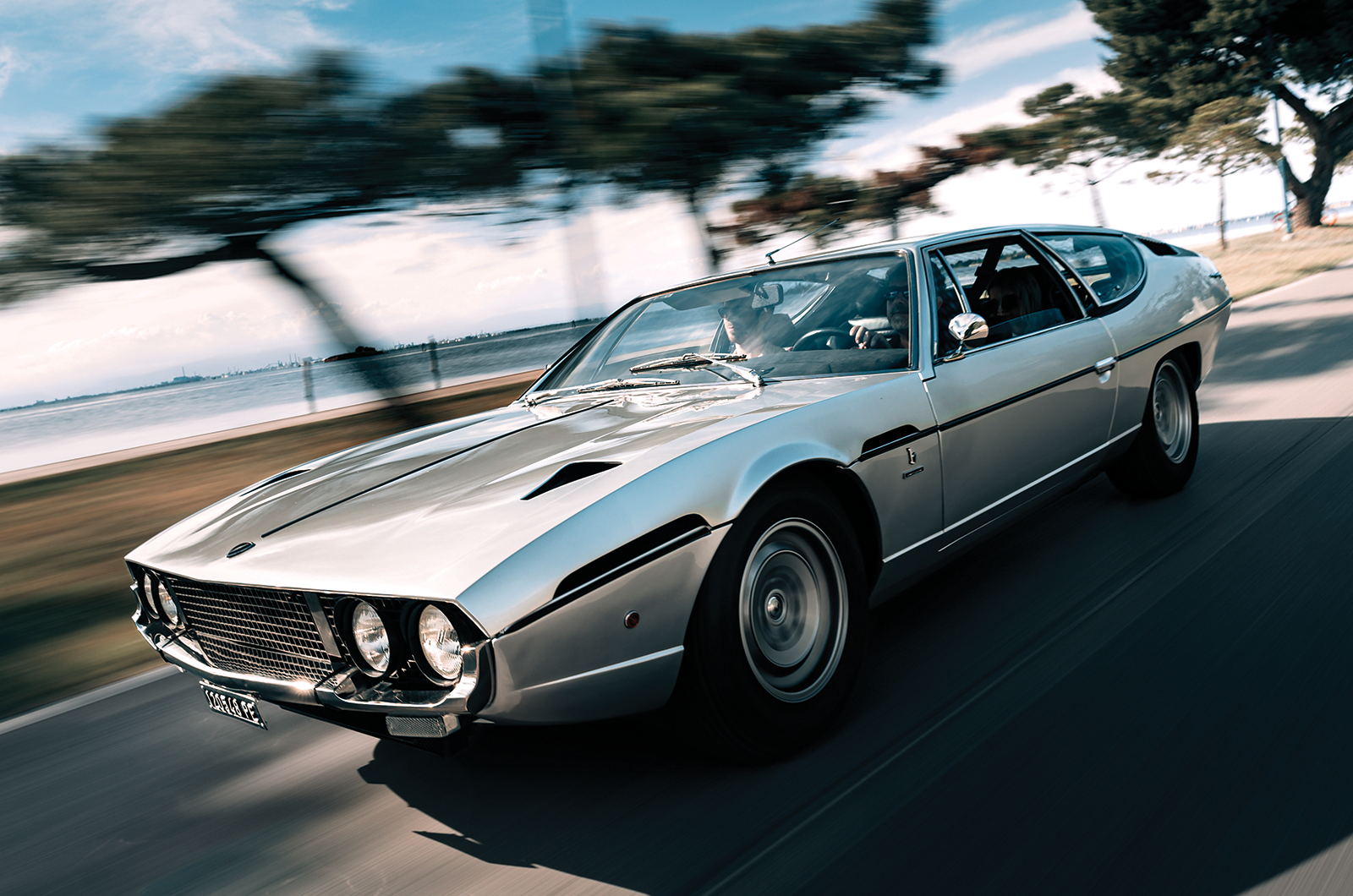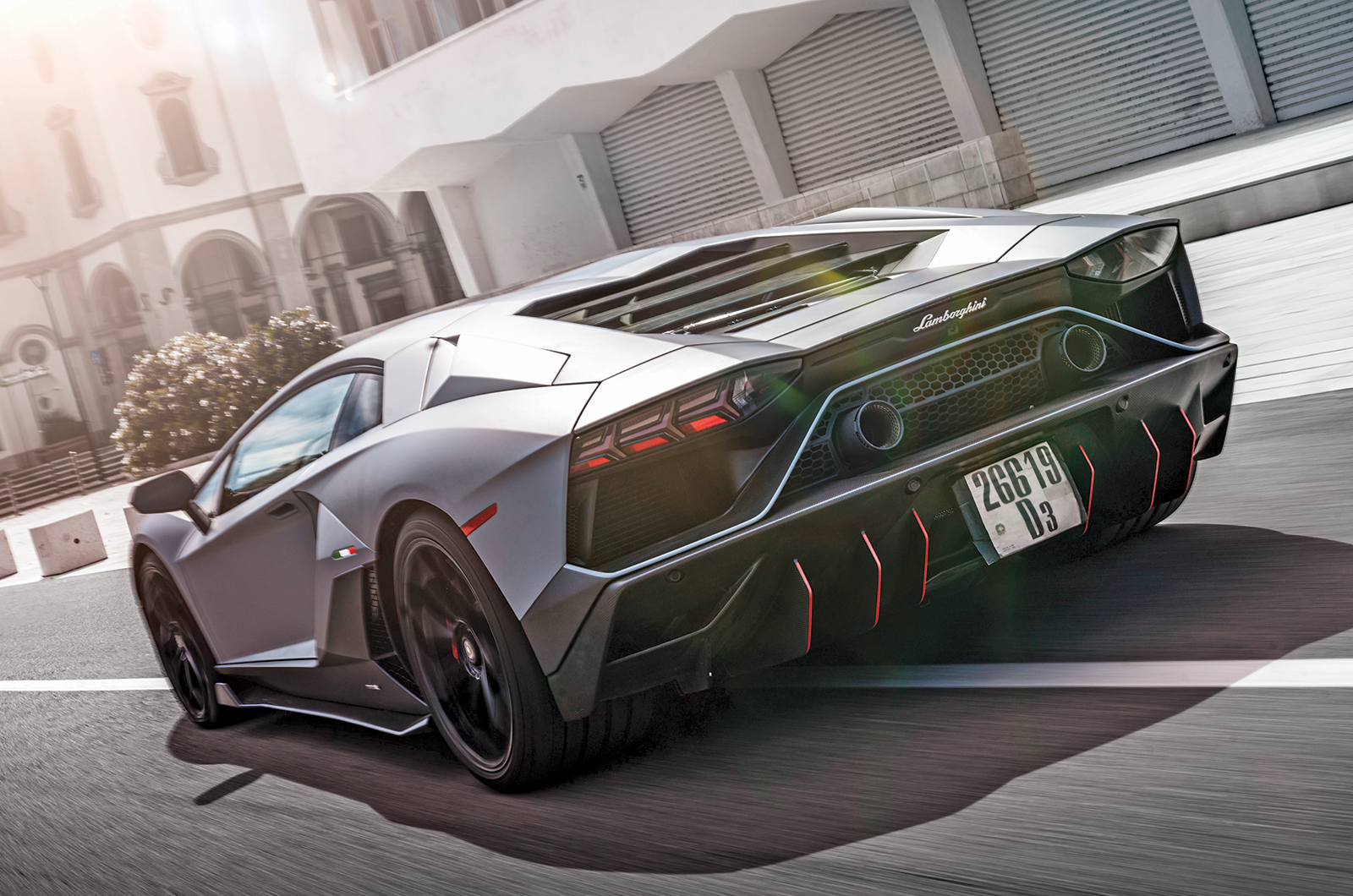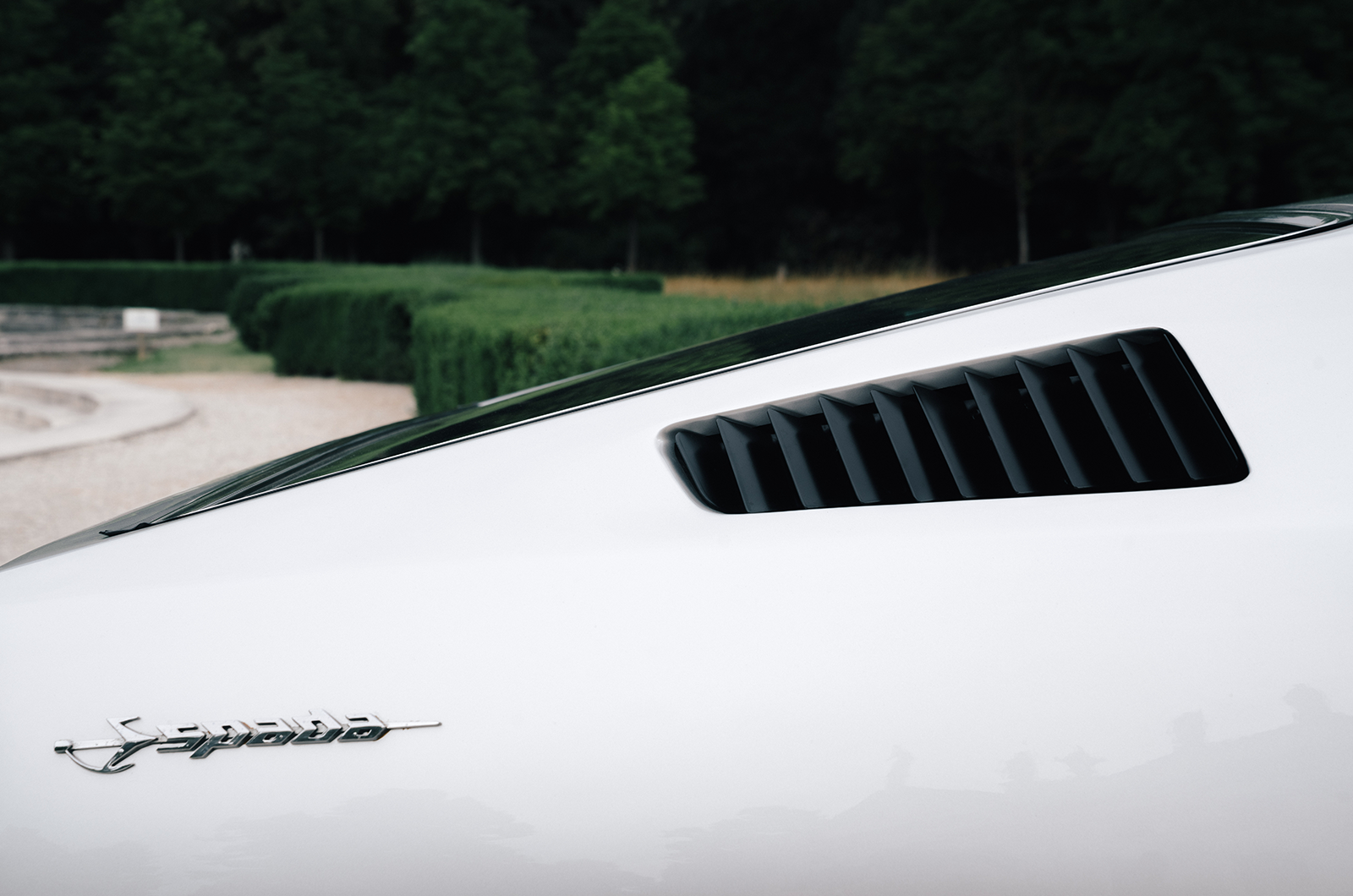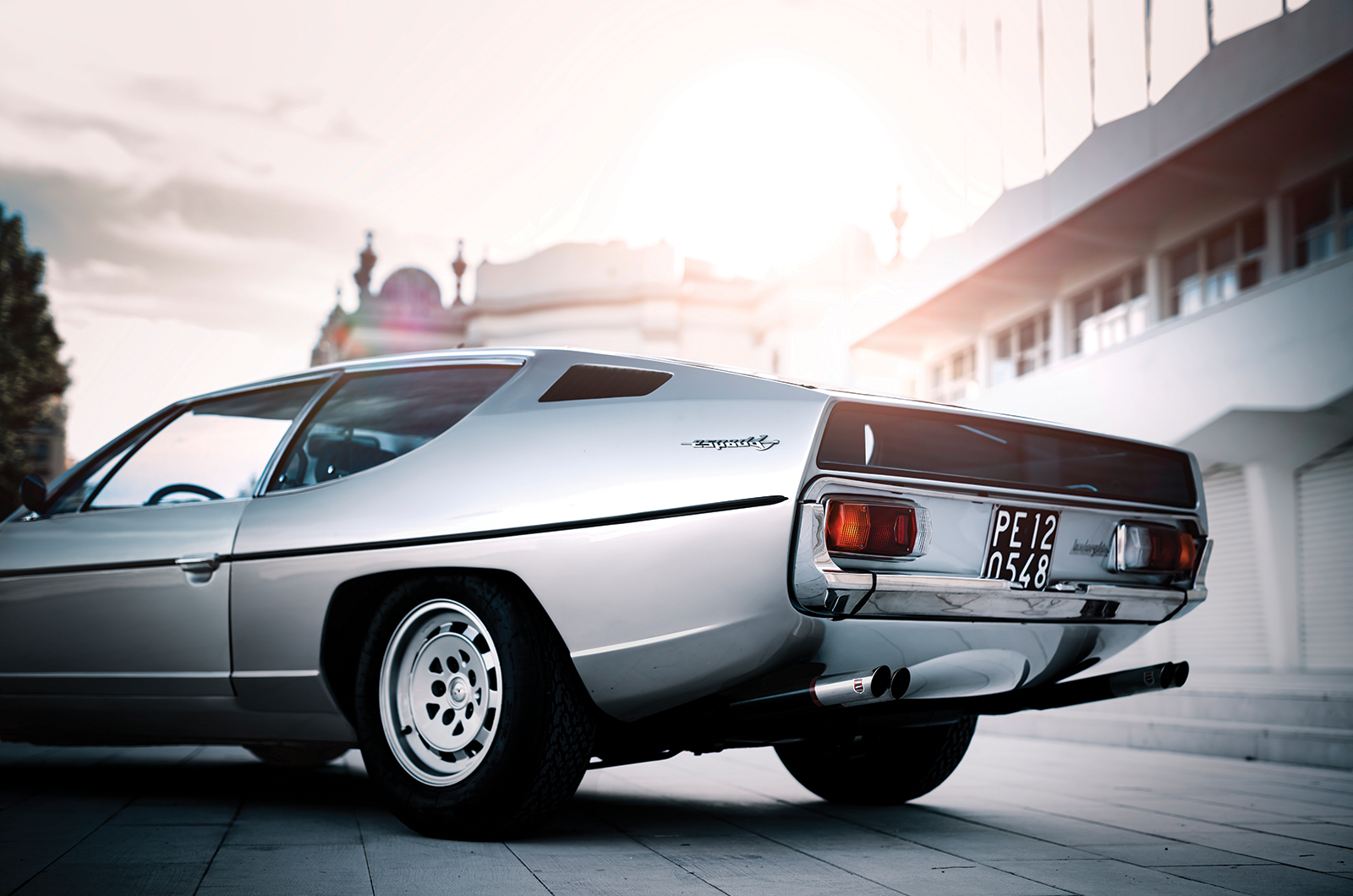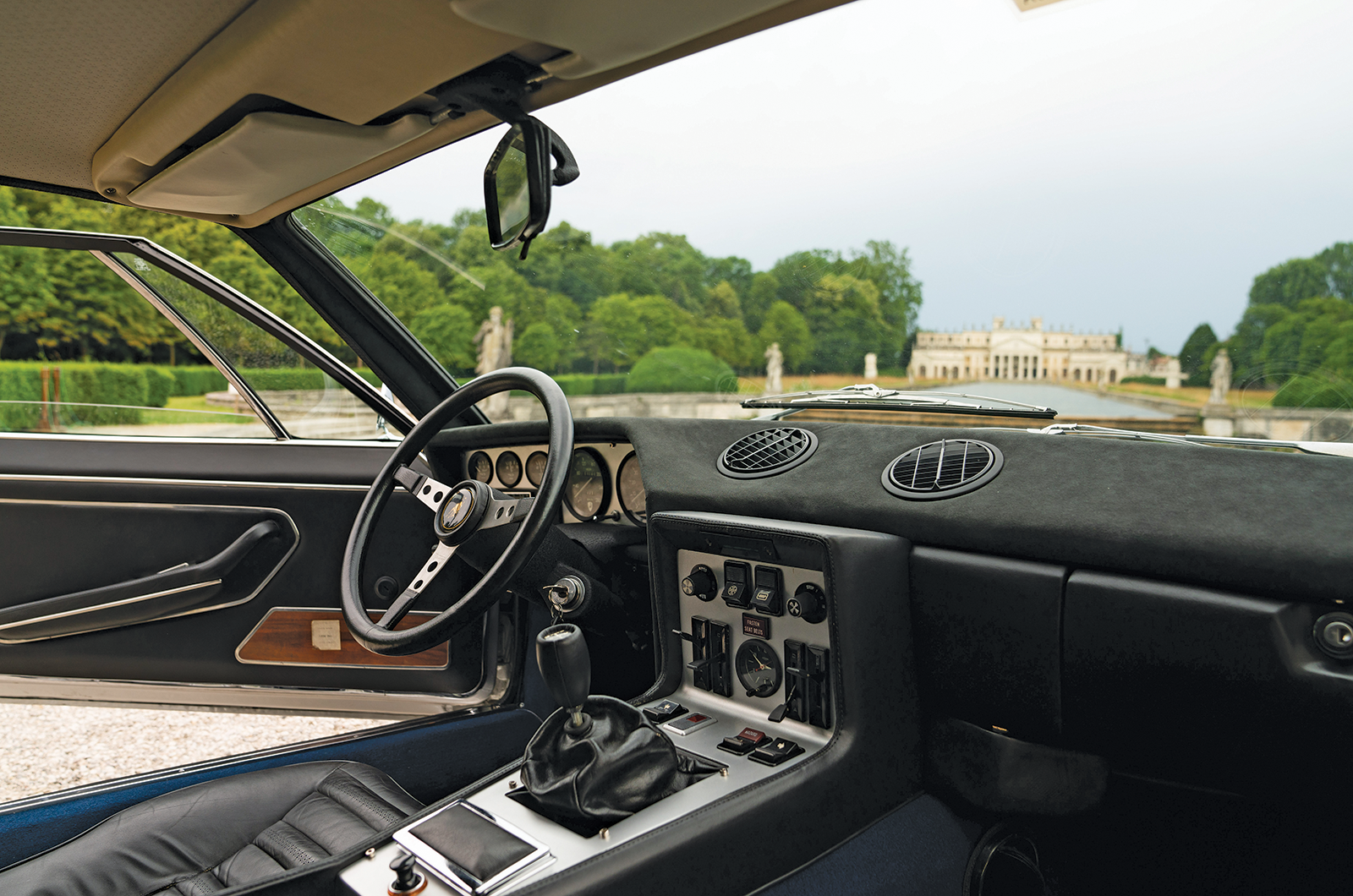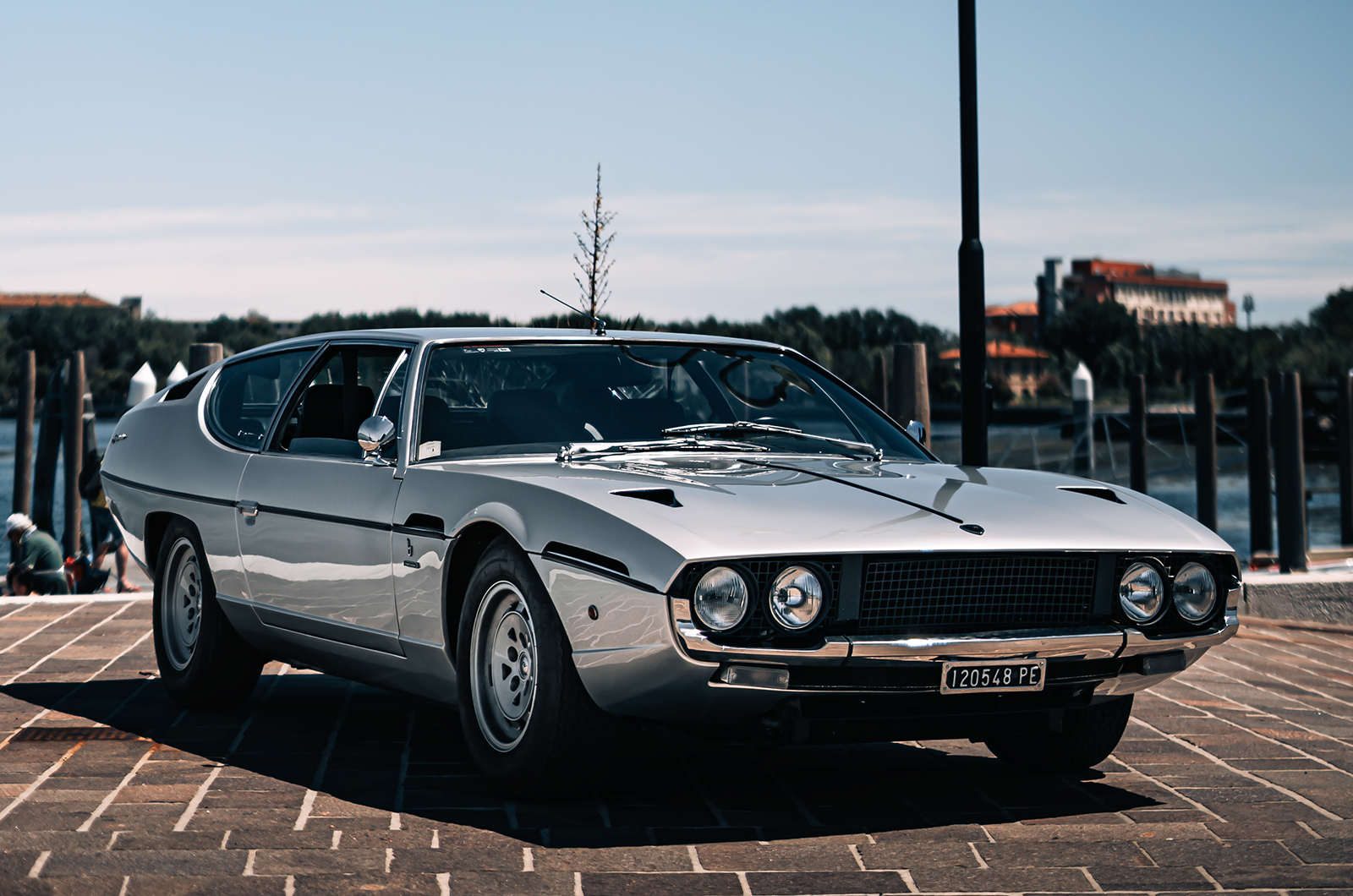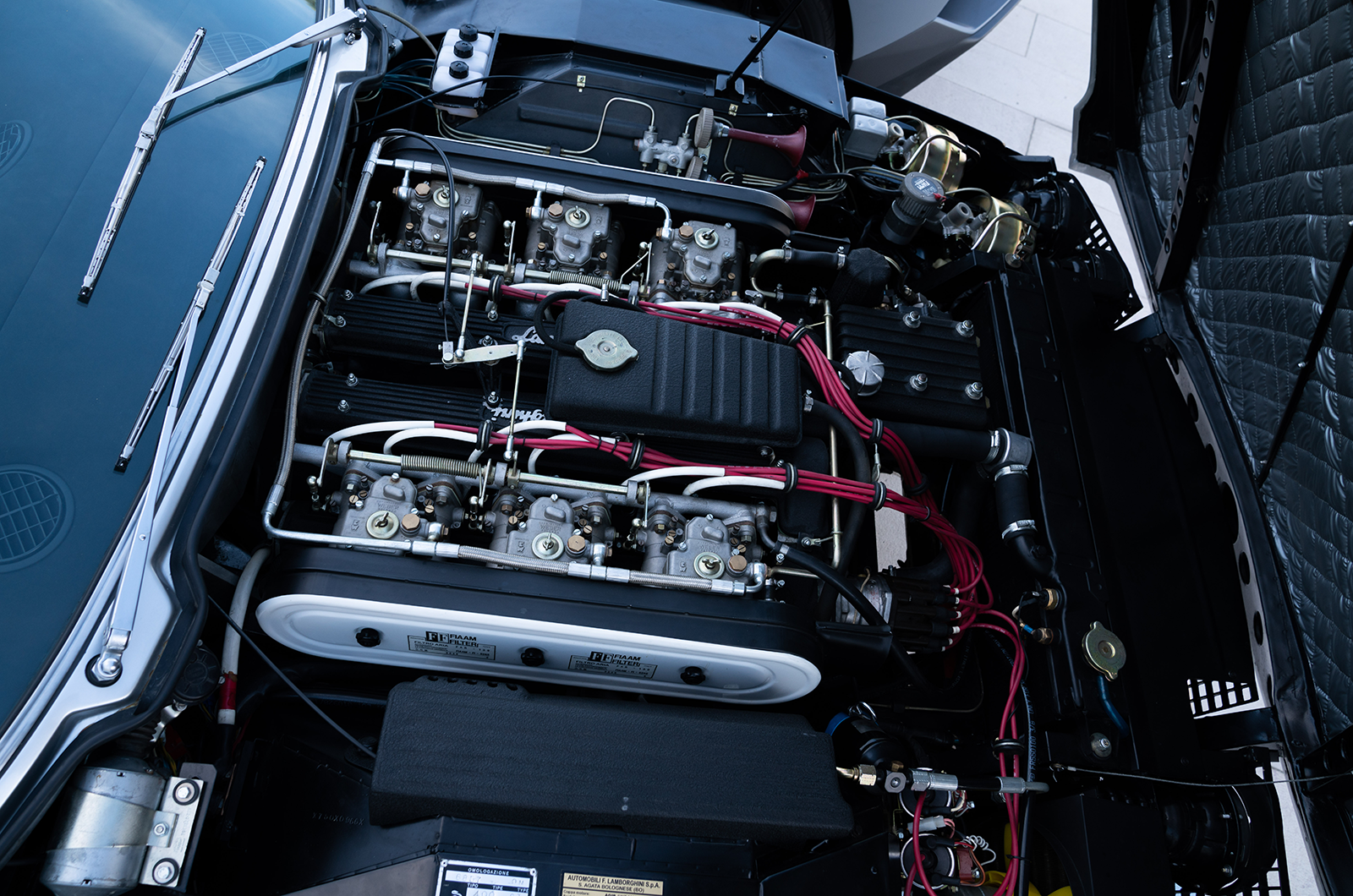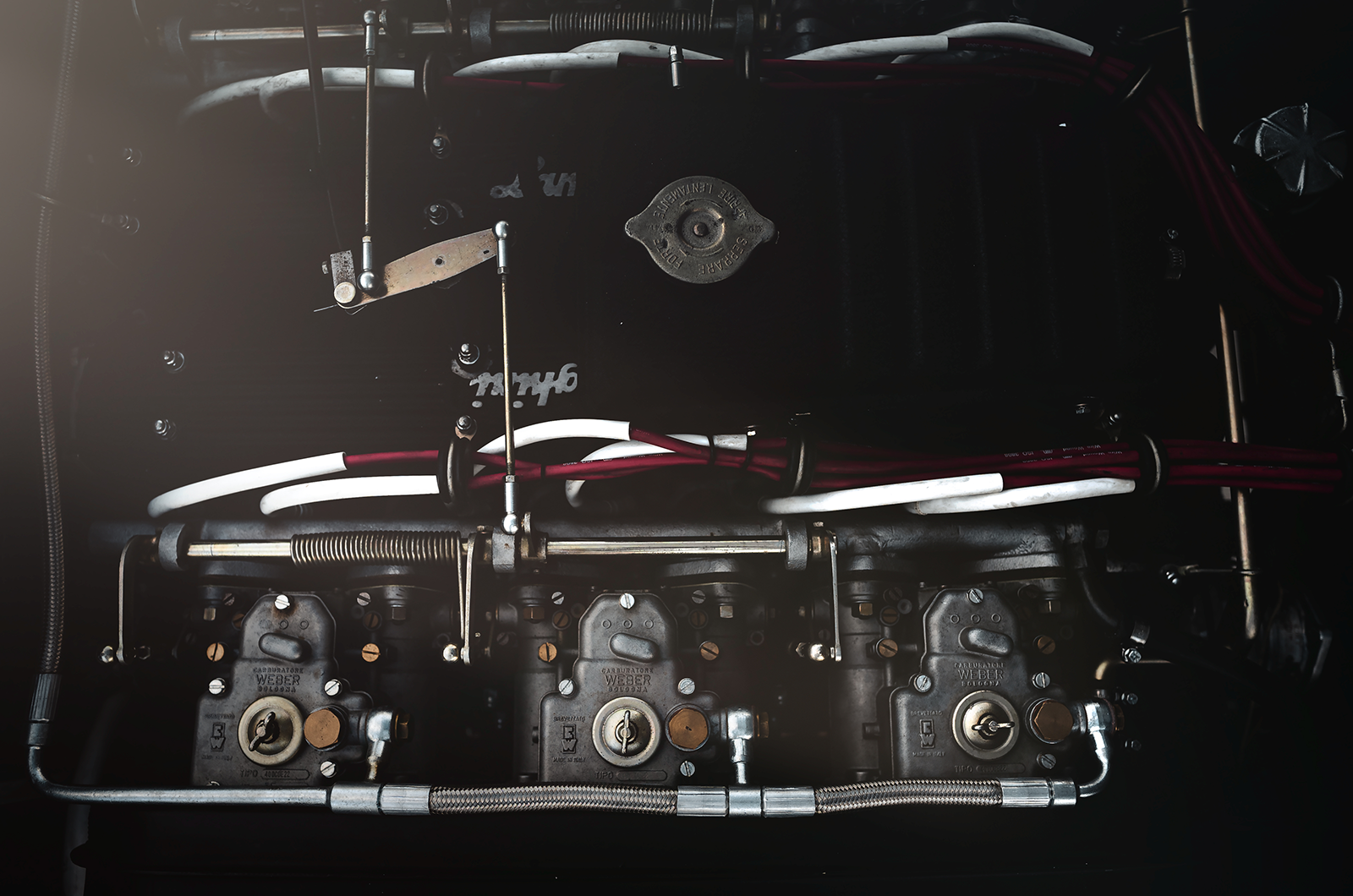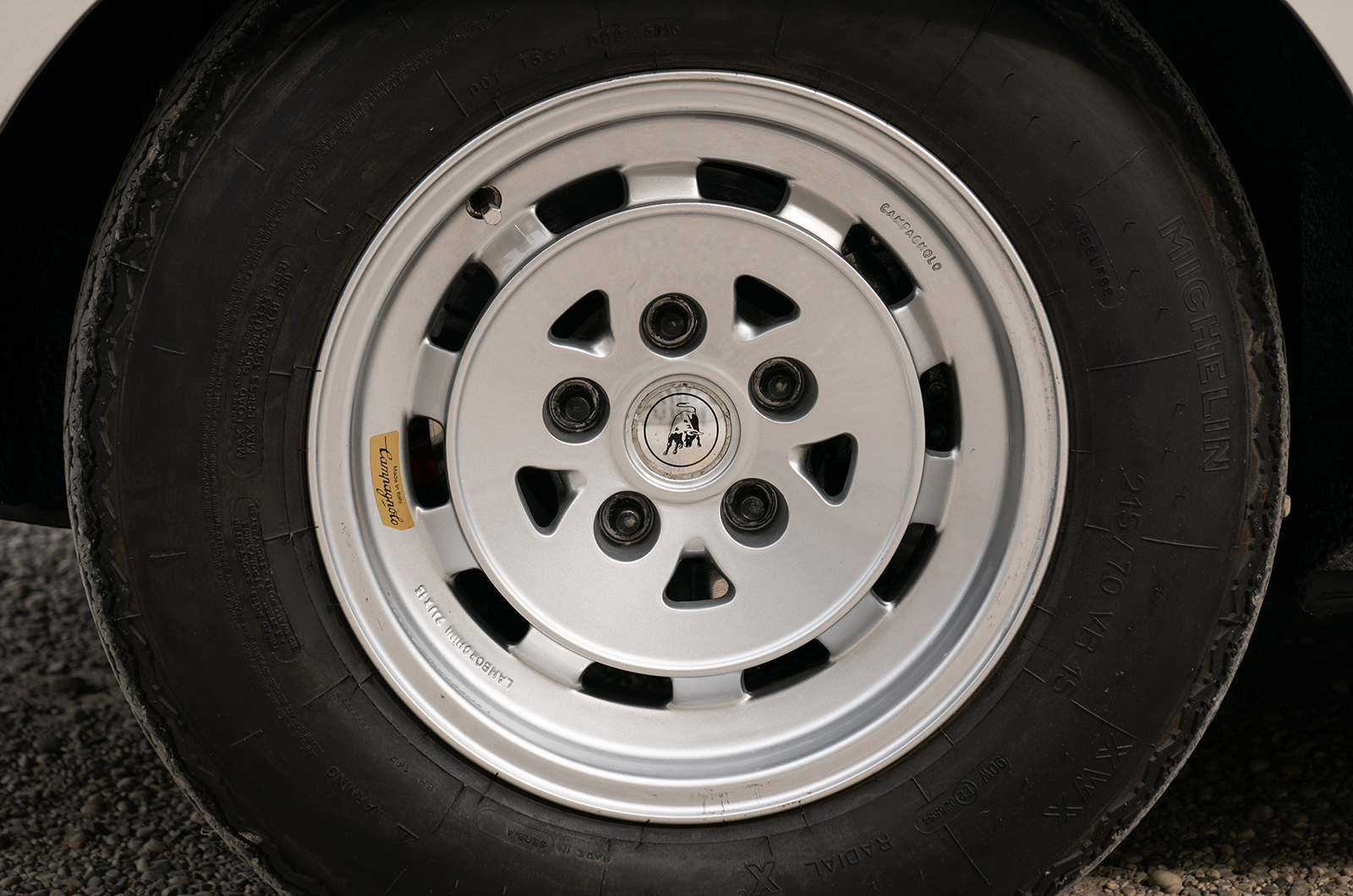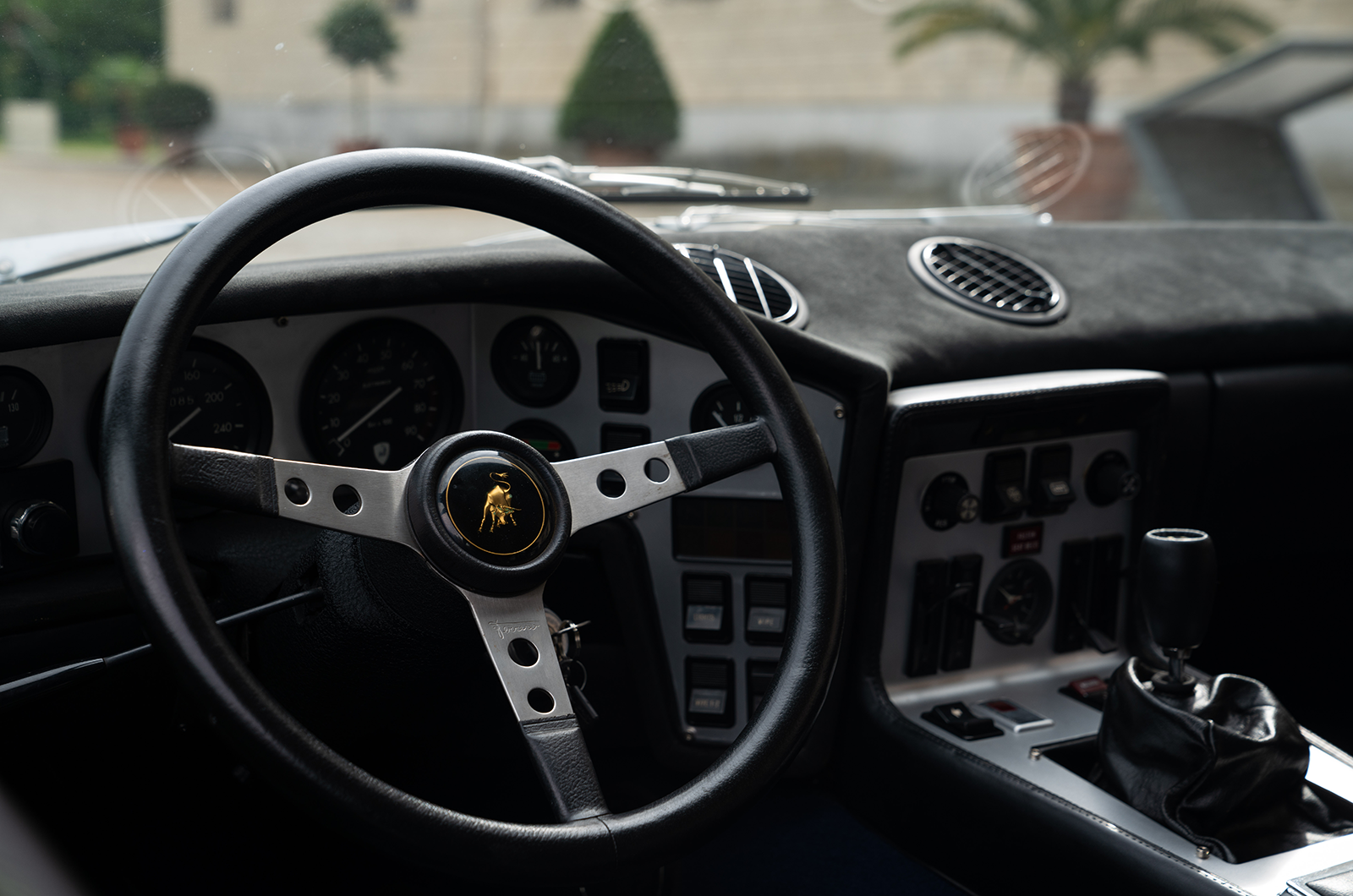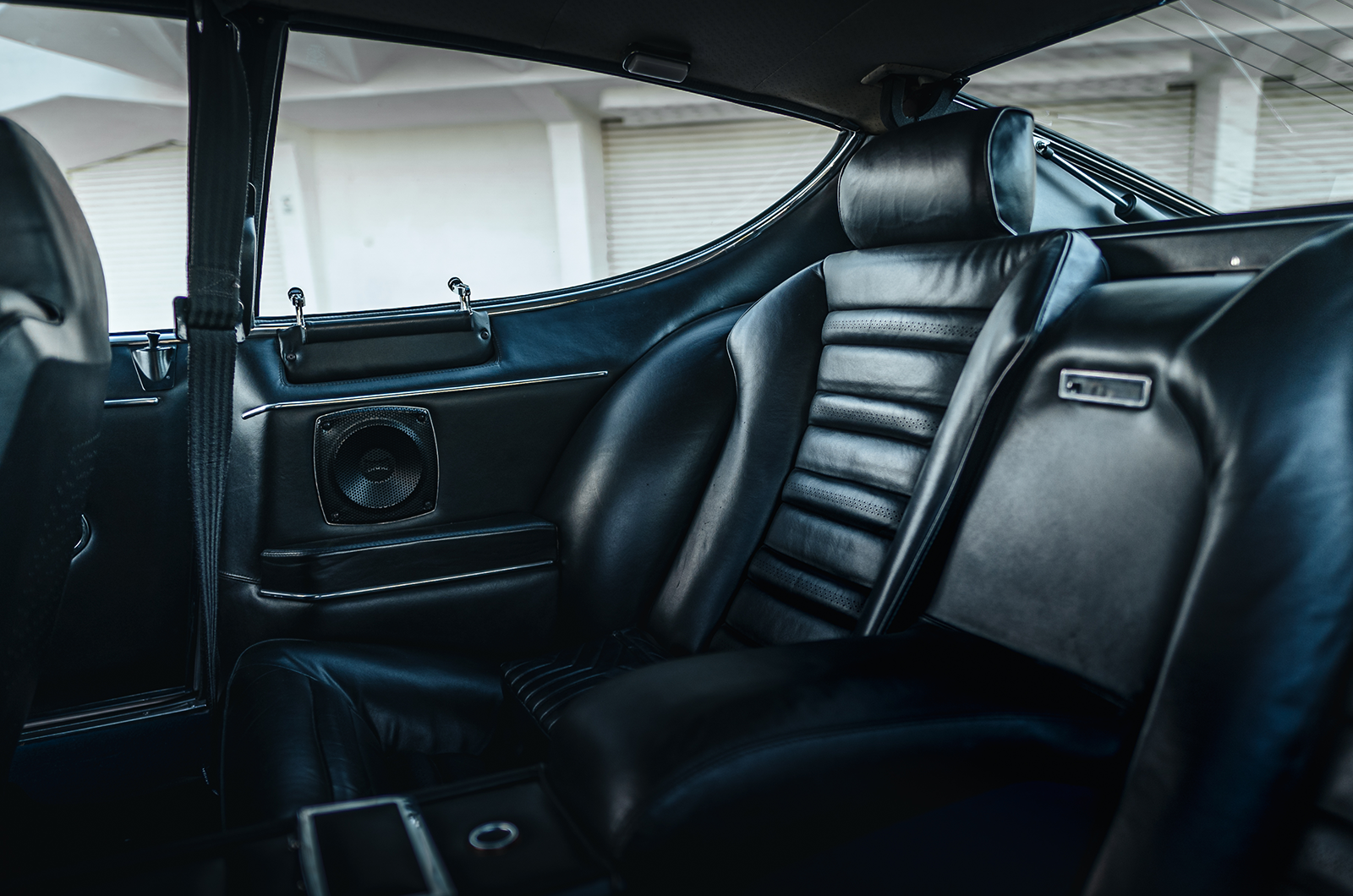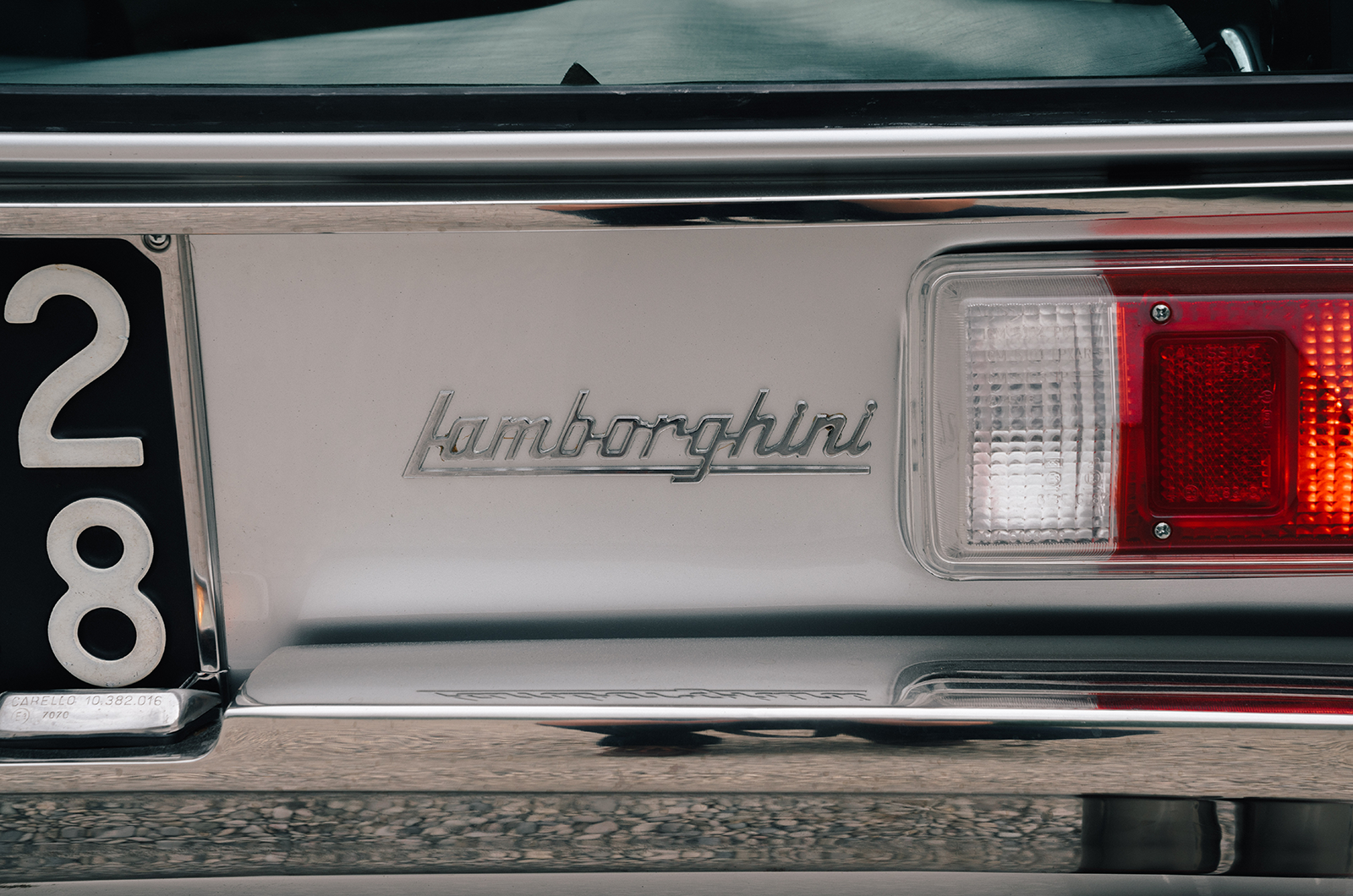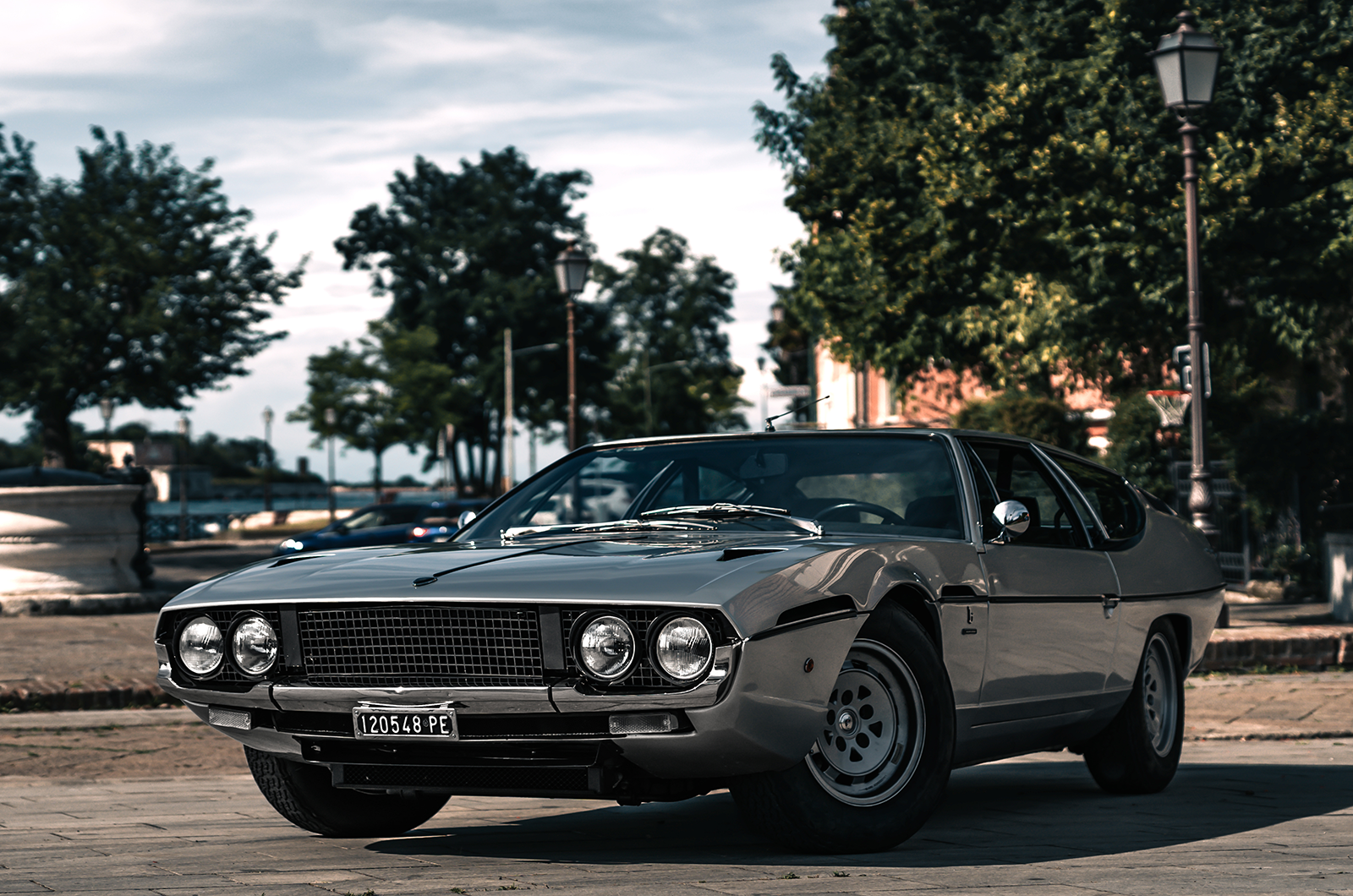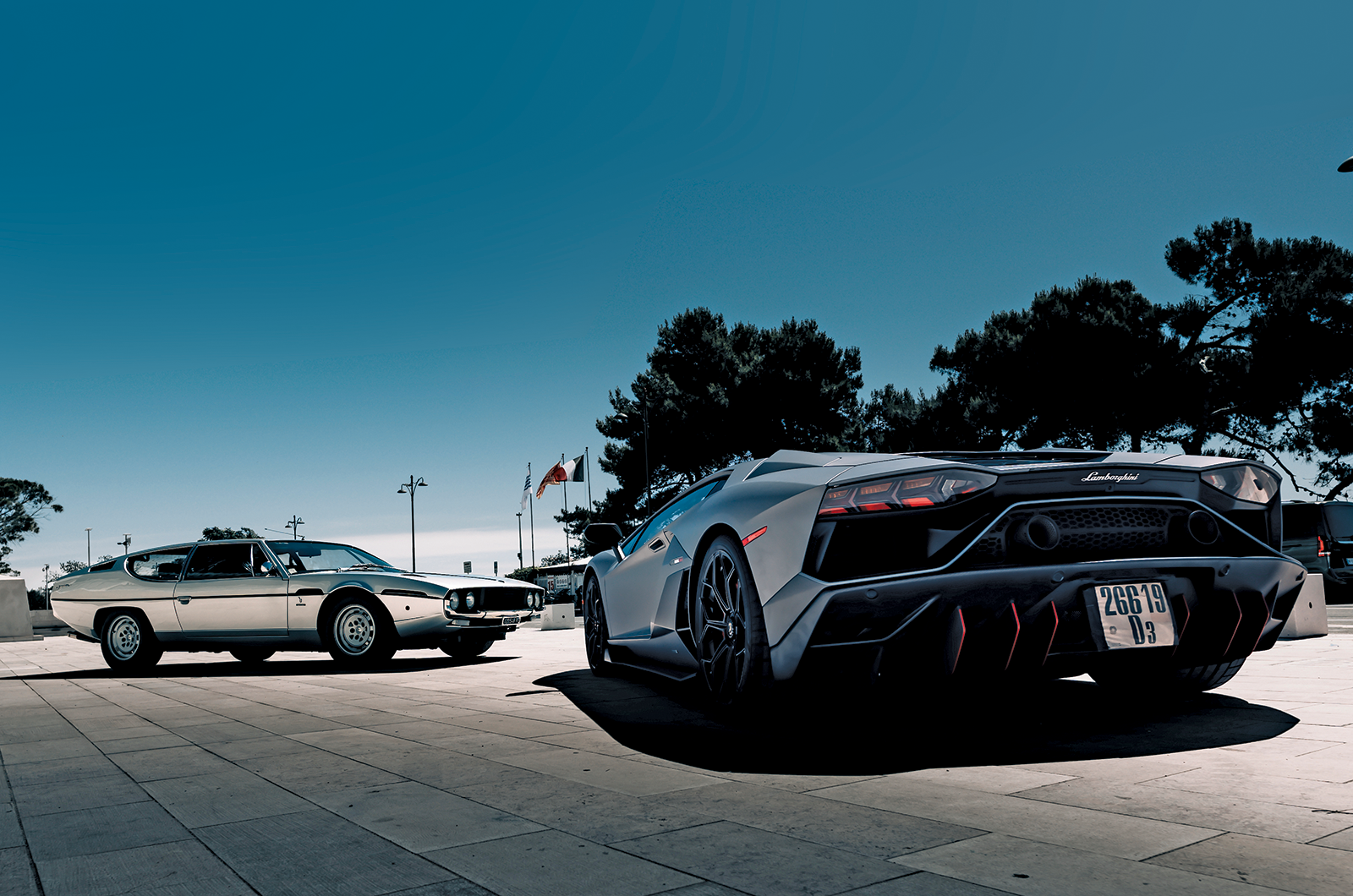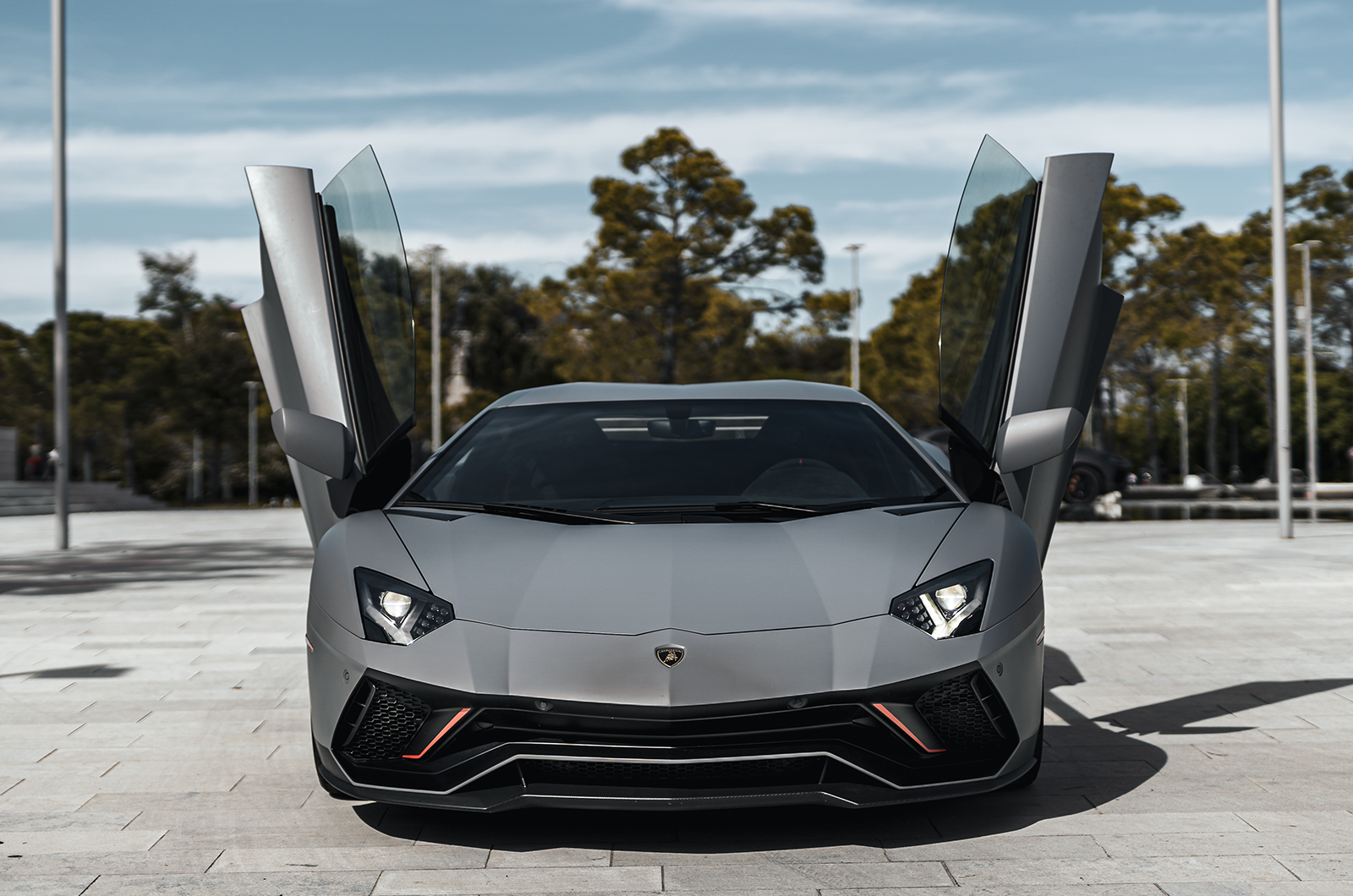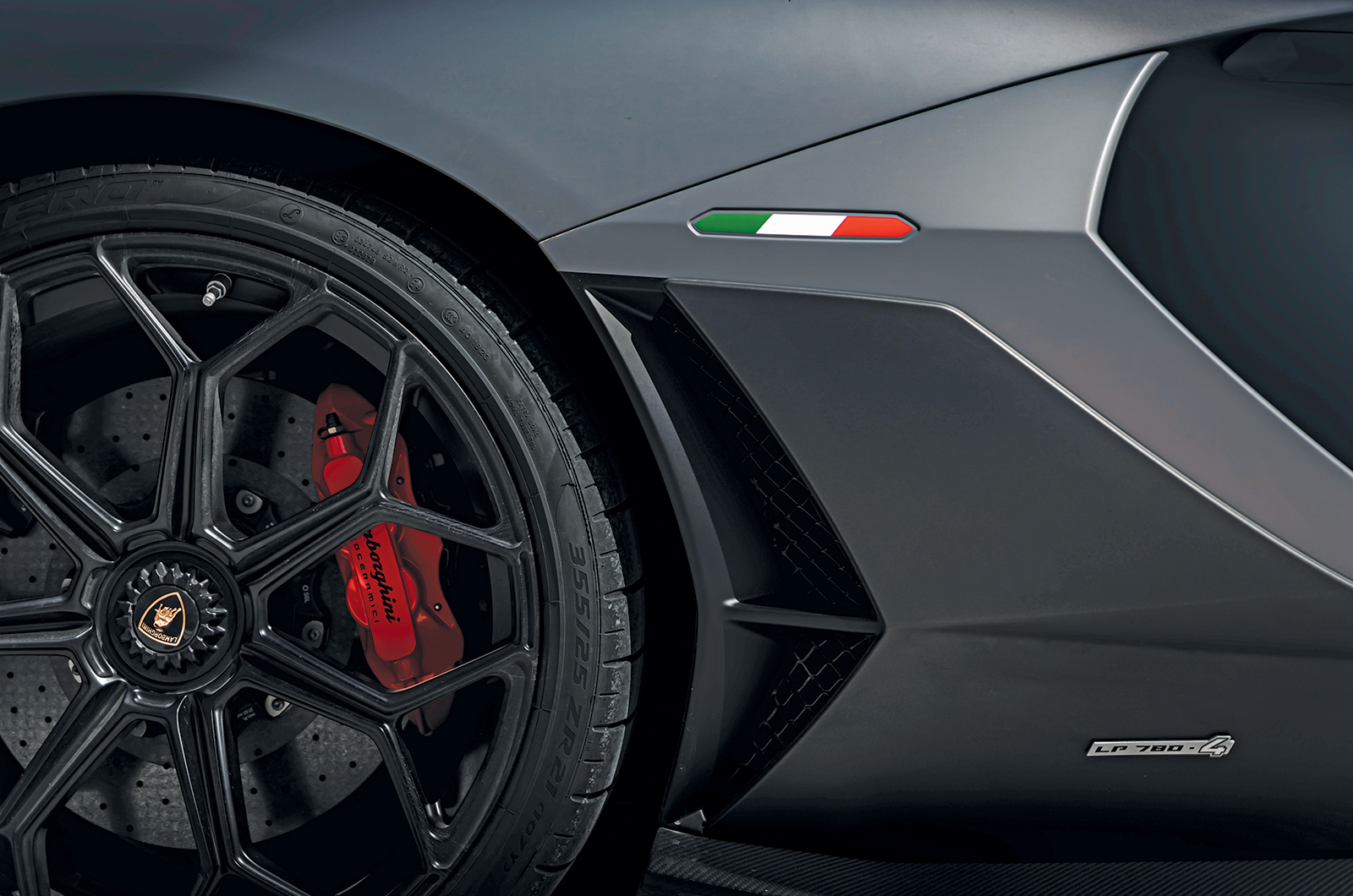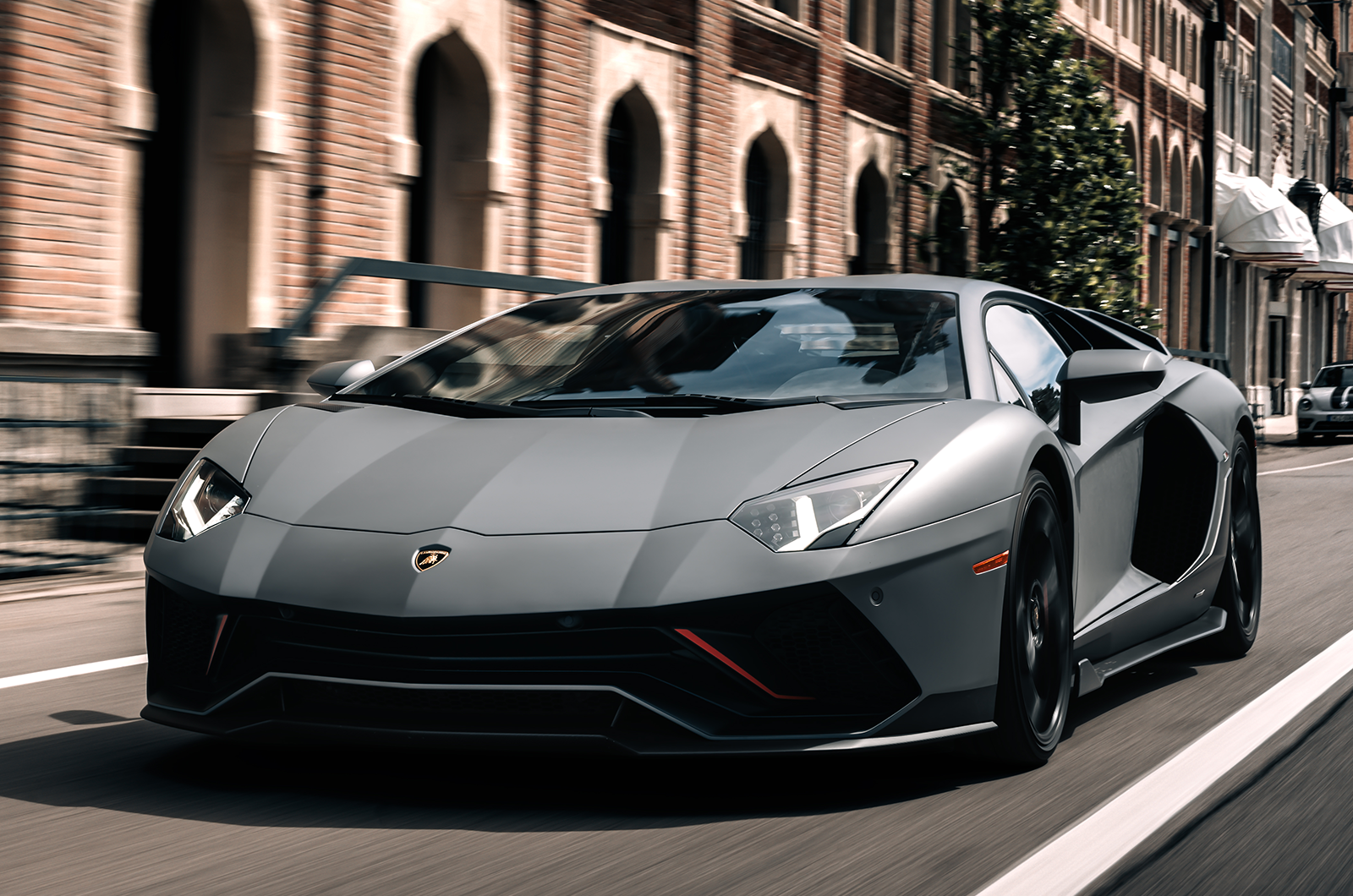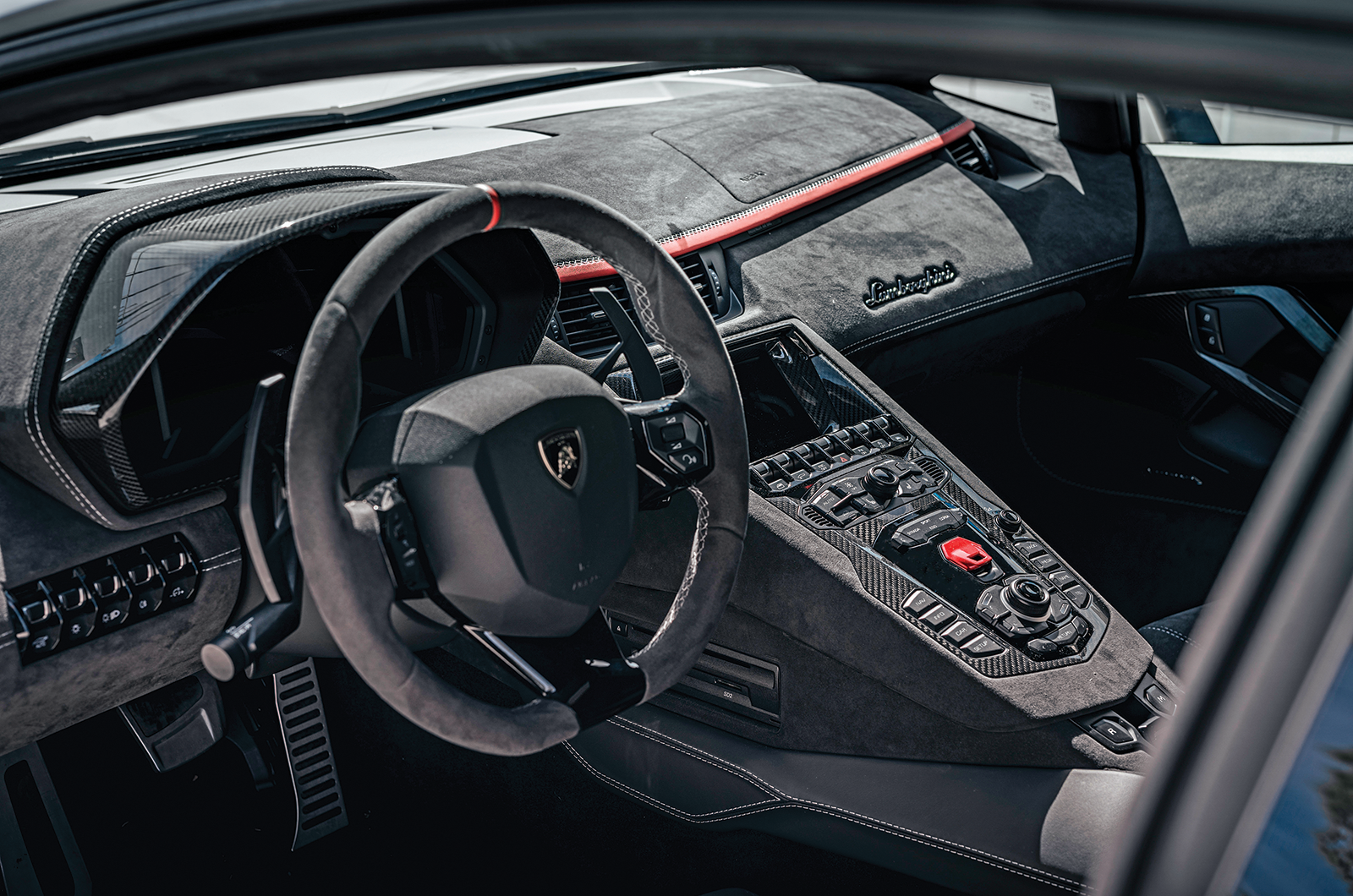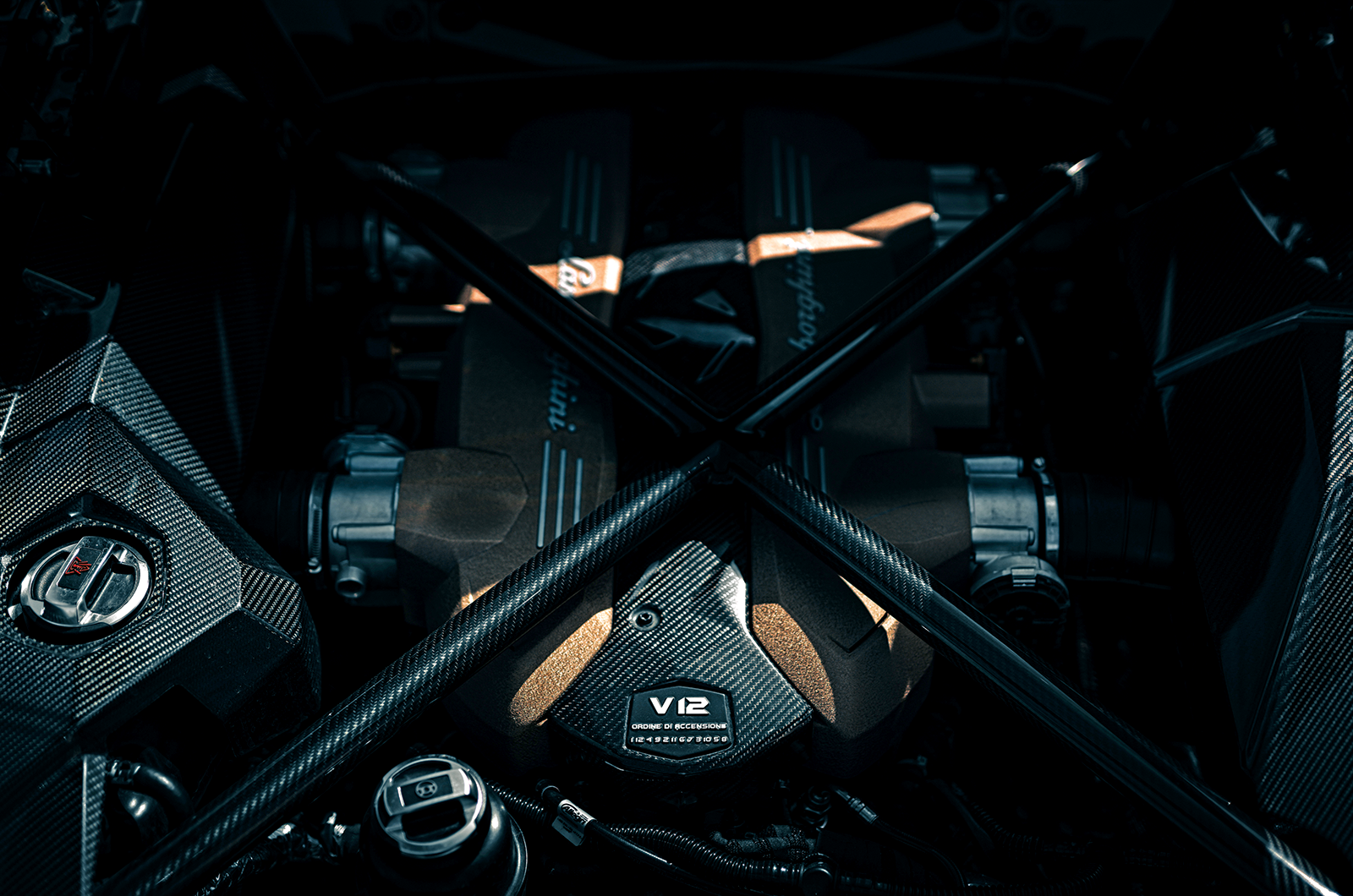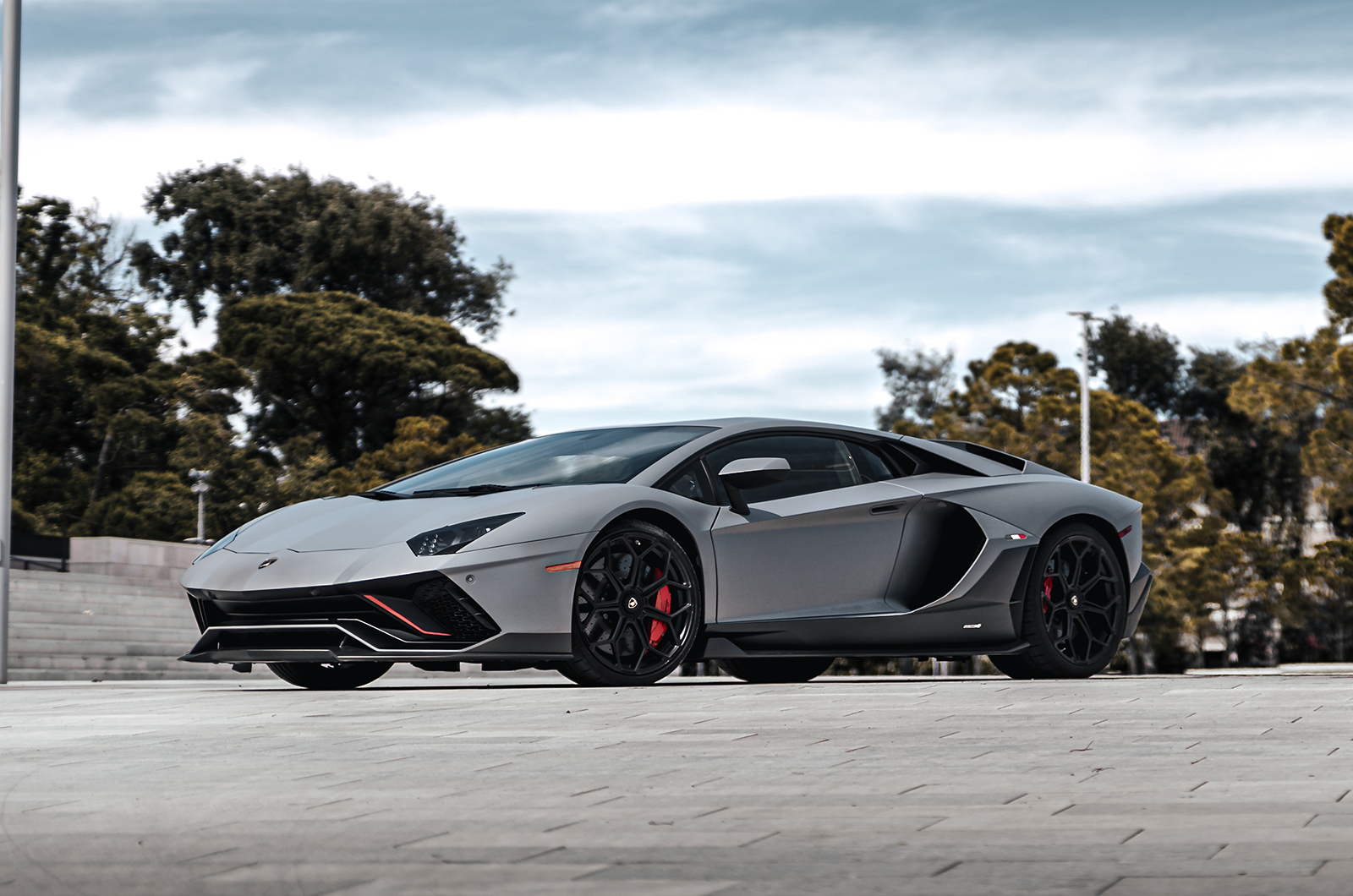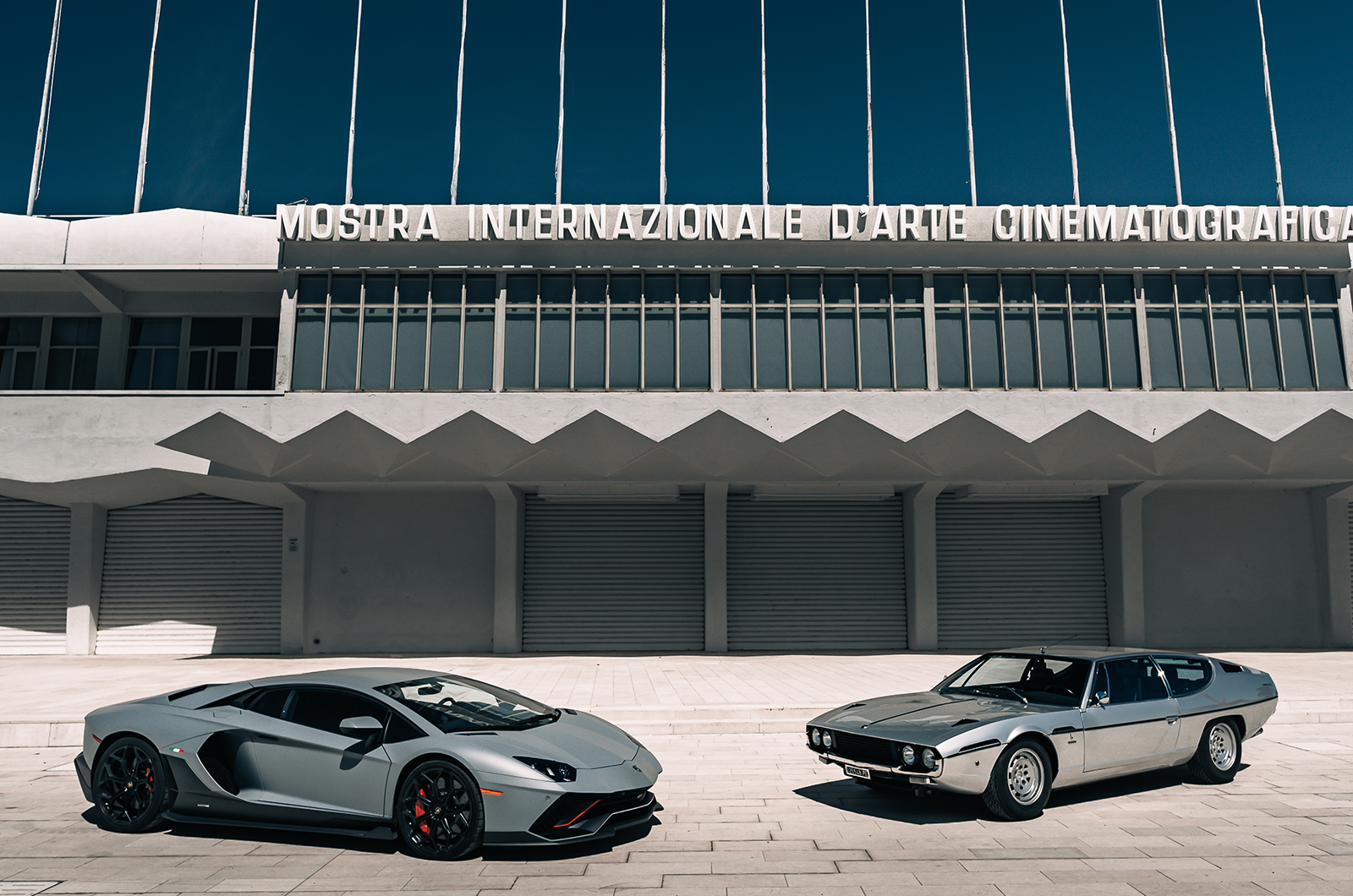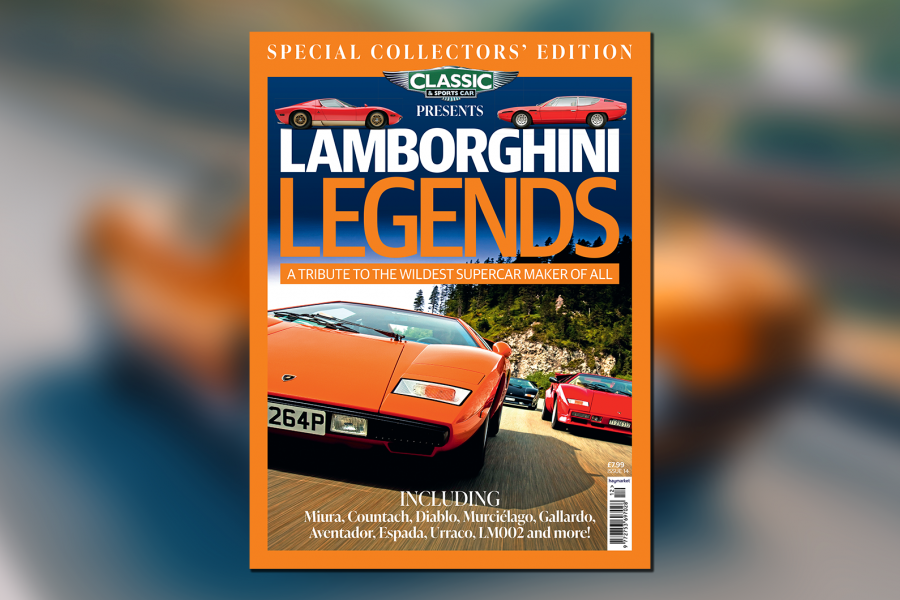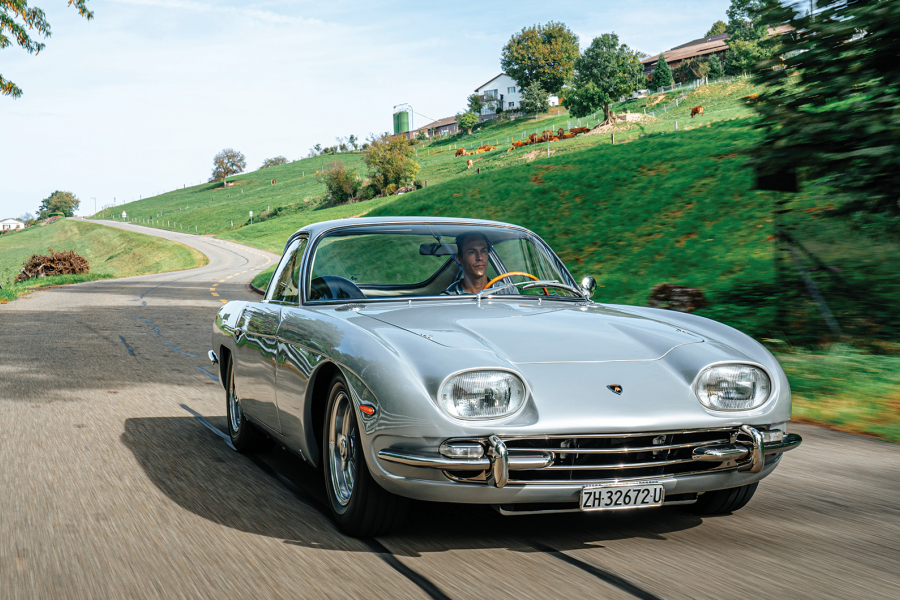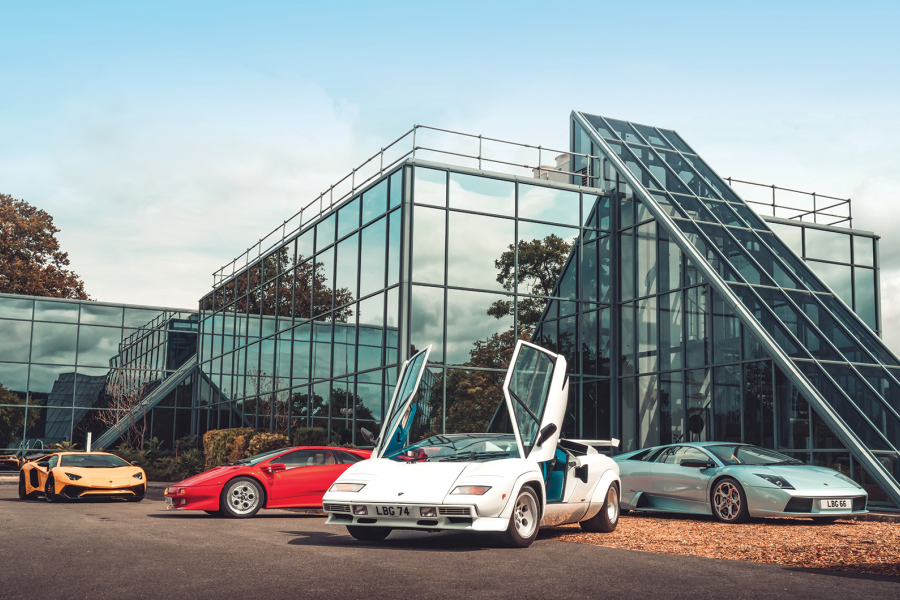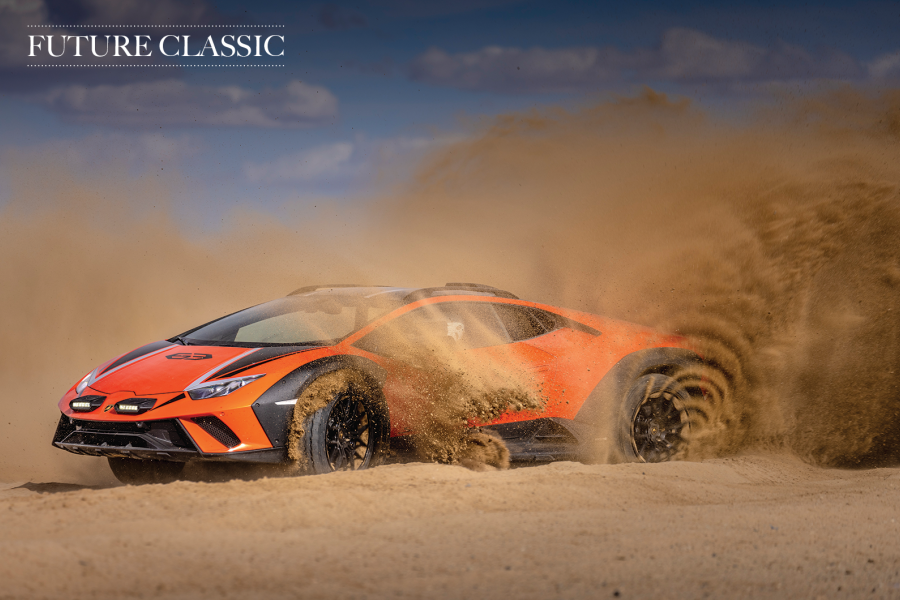It’s a pulse-racing experience, special and abnormal even to those who spend plenty of time in performance machinery.
There can be few places where modern engine technology is deployed in such a pure, unadulterated form.
On the dry roads on which we find ourselves, however, it’s never scary.
The four-wheel drive and driver assists no doubt help, but even in the less restrictive drive modes it’s not a snappy or unforgiving car, with a feeling of remarkable neutrality – a continuity with the well-balanced Espada.
The ‘LP’ number on the Aventador relates to PS power output
The strong brakes help, too, which – as is the theme with much of the Aventador – buck the modern trend for hair-trigger pedals, requiring a more deliberate and longer depression to fully deploy the anchors.
That’s one of the pleasantly old-school aspects of the Aventador, but it is a model right at the end of its life so there are inevitably a few details that feel just a bit old-hat.
The gearbox, for example, has always been the car’s Achilles’ heel.
Not in any lack of durability, but the single-clutch automated manual is a jerky, tricky thing to use as we manoeuvre the car in the tight streets of one of the Venetian Lagoon’s paved islands.
‘The Aventador isn’t snappy or unforgiving, with a feeling of remarkable neutrality in continuity with the well-balanced Espada’
Plenty of its rivals were already using more advanced, smoother transmissions a decade ago.
The interior, too, though very dramatic with its angular styling and fighter-jet-style flip-up starter button cover, doesn’t seem of the 2020s, with a small central screen and some very ordinary black plastics.
These are ills easily forgotten out on the open road.
Charging along the narrow lanes that cut through the marshy farmland of the mainland opposite Venice, the Ultimae proves to be a thrilling, capable and surprisingly friendly experience.
The Aventador is proudly Italian, but Volkswagen’s input is clear inside
The steering is perfectly weighted and communicative, aided by a firm but not crashy ride.
Free from the need for light throttle inputs and locked into manual mode, the transmission finally plays ball, too.
It’s playful in its performance at first, but once confidence is gathered to explore the fierce upper reaches of the engine’s rev range it becomes simply ridiculous, with 60mph rushing past from rest in a 2.8-second blur.
A fuel-injection system and carbonfibre vanity covers hide the Aventador’s V12 from prying eyes
Reflecting Lamborghini’s growing success in the 21st century, the company built nearly 10 times as many Aventadors than Espadas in a similar length of time.
The model’s Ultimae swansong, however, is limited to just 600 cars, and will surely become the most collectible version.
From that initial run, 15 never reached their first owners after they were destroyed in the wreck of the Felicity Ace in March 2022.
Once it became clear they were unrecoverable, Lamborghini made the decision to briefly restart production and replace them.
‘It’s a pulse-racing experience, special and abnormal even to those who spend plenty of time in performance machinery’
Where a Ferrari V12 sings a purposeful howl, these Lamborghinis have a violence that adds extra theatre to the experience – critics might say childishly so.
Both cars encapsulate the Sant’Agata ethos of unashamed exuberance, with no pretensions of anything so earnest as motorsport pedigree.
This is engineering for the sake of emotion and drama, and we can only hope that Lamborghini’s hybrid V12 gets close to capturing the same spirit.
Images: Automobili Lamborghini
Factfiles
Lamborghini Espada S3
- Sold/number built 1968-’78/1227
- Construction steel monocoque, with steel and aluminium panels
- Engine all-alloy, dohc-per-bank 3929cc V12, with six twin-choke Webers
- Max power 365bhp @ 7500rpm
- Max torque 300lb ft @ 5500rpm
- Transmission five-speed manual, RWD
- Suspension double wishbones, coil springs, telescopic dampers, anti-roll bar f/r
- Steering power-assisted ZF worm and sector
- Brakes discs, with servo
- Length 15ft 6¼in (4730mm)
- Width 6ft 1½in (1867mm)
- Height 3ft 11in (1195mm)
- Wheelbase 8ft 8½in (2650mm)
- Weight 3875lb (1761kg)
- 0-60mph 6.5 secs
- Top speed 158mph
- Mpg 14
- Price new £12,113 (1974)
- Price now £60-180,000*
Lamborghini Aventador Ultimae
- Sold/number built 2022/600
- Construction carbonfibre tub and bodywork, aluminium subframes
- Engine all-alloy, dohc-per-bank 6498cc V12, multi-point fuel injection
- Max power 769bhp @ 8500rpm
- Max torque 531lb ft @ 6750rpm
- Transmission seven-speed automated manual, 4WD
- Suspension double wishbones, pushrod-actuated horizontal coil spring/damper units f/r
- Steering power-assisted rack and pinion
- Brakes carbon-ceramic discs, with servo and anti-lock
- Length 15ft 2in (4868mm)
- Width 6ft 11in (2098mm)
- Height 3ft 9in (1136mm)
- Wheelbase 8ft 10in (2700mm)
- Weight 3417Ib (1550kg)
- 0-60mph 2.8 secs
- Top speed 221mph
- Mpg 13
- Price new £344,900 (2022)
- Price now £450,000+*
*Prices correct at date of original publication
Enjoy more of the world’s best classic car content every month when you subscribe to C&SC – get our latest deals here
READ MORE
60 years of Lamborghini
Ferrari 328GTS vs Lotus Esprit Turbo vs Lamborghini Jalpa: junior supercar showdown
The Lamborghini LM002: absurd yet enchanting
Charlie Calderwood
Charlie Calderwood is Classic & Sports Car’s Features Editor
